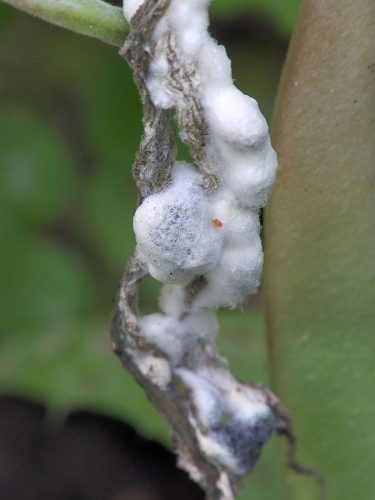This fungus affects plants in moist, dark and warm environments (15-21°C). The plant becomes covered with woolly fungal fluff, wilts and dies.
Also known as:
Lettuce drop
White mold
Sclerotinia Rot (Belgian endive)

Sclerotinia disease (Sclerotinia sclerotiorum). This fungus affects plants in moist, dark and warm environments (15-21°C). The plant becomes covered with woolly fungal fluff, wilts and dies.
Roots and stems turn black and slimy. Black sclerotia fall to the soil and appear on plant debris. These sclerotia become active after several weeks to years. Black globules of fungal tissue (sclerotia), resembling rat droppings, form in the affected stems.
Similar or related to sclerotinia disease:
Gladioli white mold (Stromatinia gladioli)
Bulbs white mold (Sclerotinia bulborum)
Lettuce drop (Sclerotinia minor)
Where to find
- Potato
- Jerusalem artichoke
- Endive
- Cucumber
- Bell pepper
- Lettuce
- French bean
- Belgian endive
- Sunflower
Control
Control in the vegetable garden is not possible.
Prevention
Wide crop rotation prevents serious soil contamination. The green manures yellow mustard and leaf radish are host plants of this fungus; keep this in mind in the crop rotation schedule.
